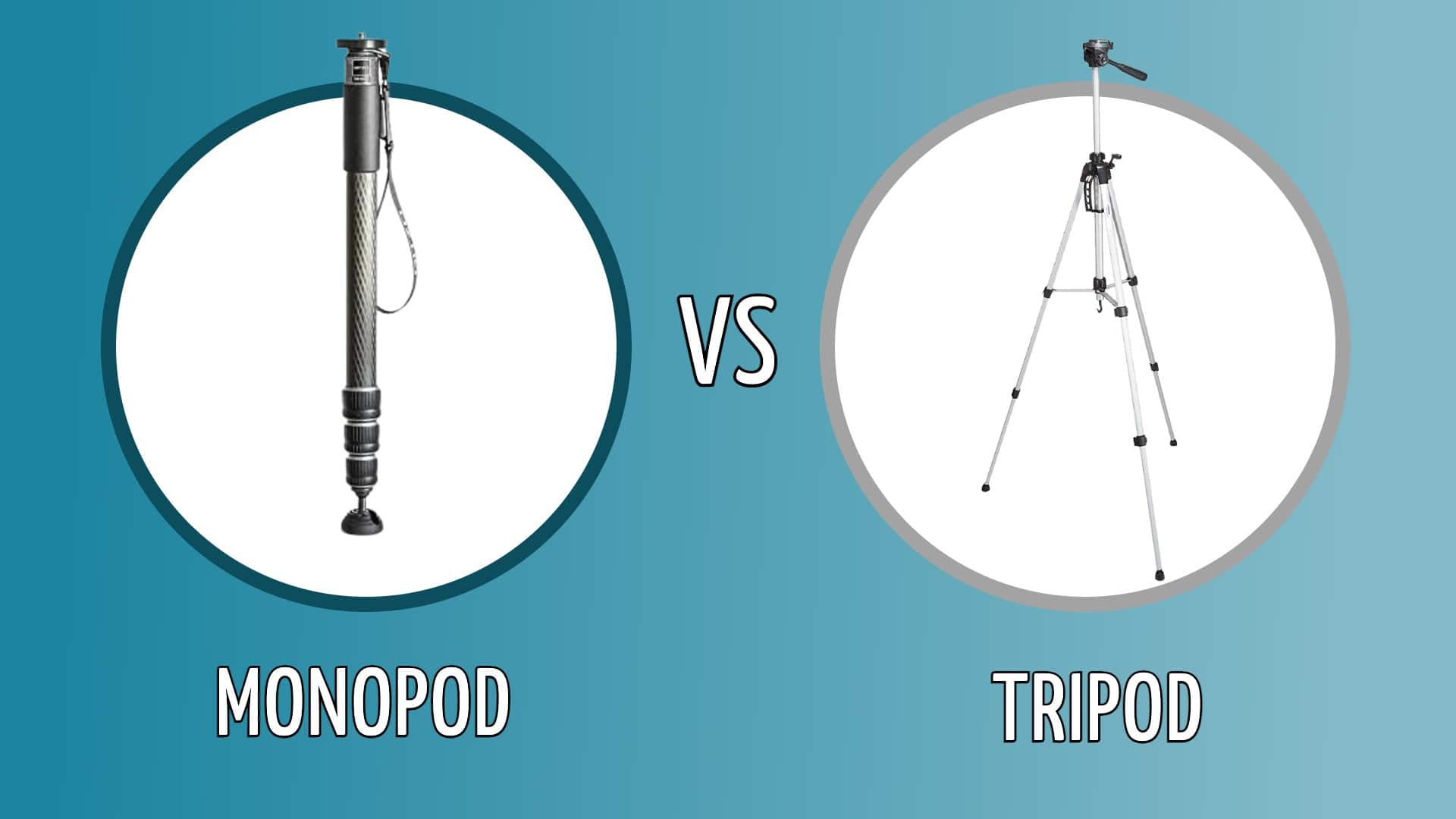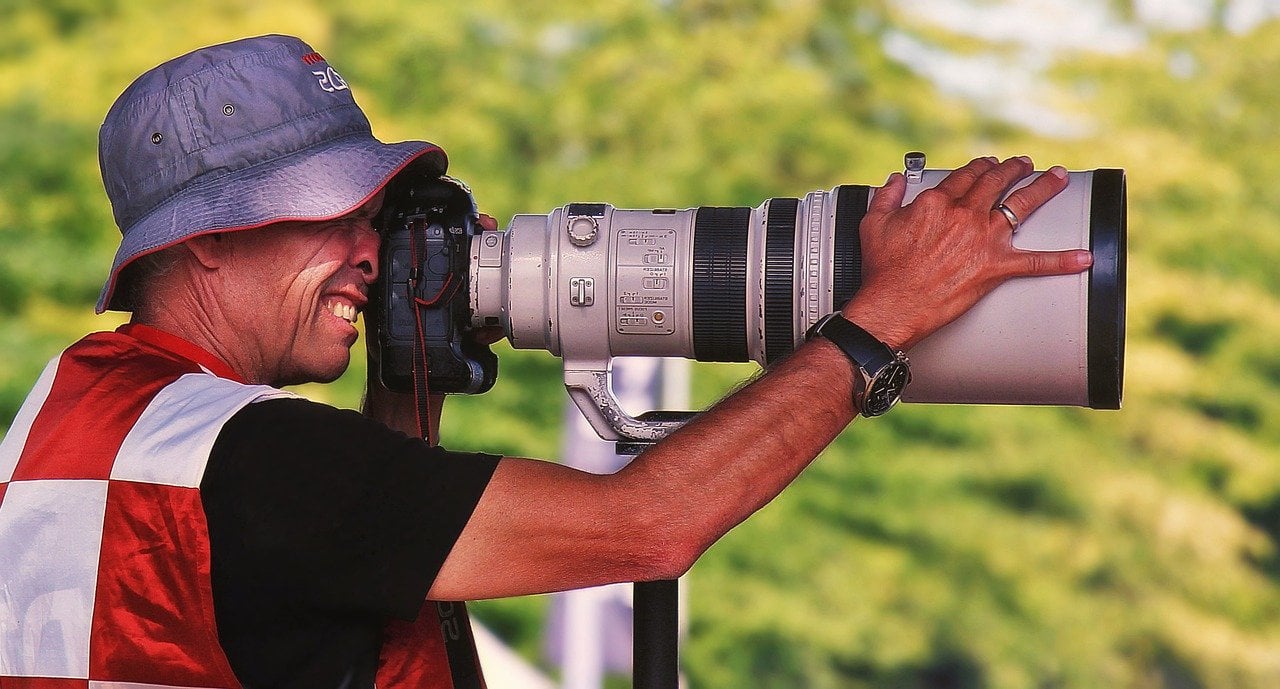Monopod vs. Tripod: Which Is Better for Your Needs? (2025)
Last Updated on

While it’s fun to point your camera and take pictures, once you start to get more serious, you’ll need the extra stability that tripods and monopods offer. If you have to choose between one or the other, you need to have a thorough understanding of where each device excels.
That’s why we came up with this comprehensive guide to walk you through everything that you need to know about these versatile tools. We dive into the basics of each setup before breaking down where each one thrives, so you can decide which one is best for your needs.

Overview of Monopods
Monopods are less popular than their more famous cousin, the tripod, but that doesn’t mean there aren’t situations in which it would better to have one. We’ve broken down everything that you need to know about monopods.

What Is a Monopod?
Monopods are long poles that you can attach a camera to the top of. This allows you to stick the camera in the ground and hold it in place for longer exposures that require more stability.
Monopods are usually extremely lightweight and portable, which adds to their appeal. It’s why many professional photographers want a monopod to help them set their photos apart.
When Do You Want a Monopod?
Despite their drawbacks, monopods do have a slew of advantages over tripods. For starters, they’re far more mobile. While you can move a tripod around when time is of the essence, you usually don’t have enough time to tear down and set up a tripod at each site.

Monopods don’t have that problem because you can simply pick them up and move them to the next site. Moreover, monopods are great tools when you don’t have a ton of space or have an uneven surface.
Monopods are small, which means that you don’t need a large working area to use them. This can be a huge perk when space is tight and you can’t fit an entire tripod assembly.
- They take up less space
- They are more mobile than tripods
- Monopods are lighter than tripods
- Less stability than a tripod
- You need to hold the monopod the entire time
- Fewer choices to choose from

Overview of Tripods
Tripods are one of the most popular camera accessories, and with all the perks they offer, it’s not hard to see why. But that doesn’t mean they’re the perfect choice for every situation. We’ve broken down everything that you need to know about these versatile camera accessories.

Different Types of Tripods
While most people know what tripods are, many don’t realize the full extent of what’s out there. There are multiple types of tripods available, and we’ve highlighted a few popular options.
First, there are the tabletop tripods. These are small but extremely portable. Because they are so small, it’s easy to take them from site to site, but they’re not tall enough for many applications. If you’re setting up a shot close to the ground or have an elevated area to put the tripod on, you’re in luck.
The next option is the medium-duty tripod. These are the jacks of all trades when it comes to tripods. While they provide the extra stability that you need, they’re also lightweight and versatile enough for you to take them out of the studio.
Medium-duty tripods are what most recreational photographers look for when shopping for a tripod.
Finally, there are studio tripods. These provide the most stability, but they’re usually extremely heavy and hard to move. As the name suggests, you’ll usually only find these tripods in studios because of how difficult they are to move.

When Do You Want a Tripod?
There is a wide array of situations in which you would want a tripod. That’s because anytime that you want extra stability, a tripod gives you precisely what you need. Tripods also make it easier to take panorama shots, and they give you the ability to get yourself in the shot without having to take a selfie.
Tripods are incredibly versatile tools that make taking steady photos extremely easy — as long as you’re taking the pictures from a set point and don’t need to move.
- Extra stability
- You can set up shots and walk away
- Great for panoramas
- More choices to choose from
- They don’t always fit everywhere
- They take longer to set up
- They can be difficult to move

Choosing Between a Monopod and a Tripod
The most significant factor that you need to consider when deciding between a monopod and a tripod is where you plan on using it. If you plan on hitting the trail and taking adventure shots, a monopod is probably what you’re looking for. It’s more lightweight, and it’s easy to take from location to location.
However, if you’re looking for a device that you can use for family photos or setting up fantastic panoramic shots, a tripod is the way to go.
If you’re stuck somewhere in between, you probably want a tripod. They are more versatile than monopods.

Conclusion – Monopod vs Tripod
When you’re looking to take your photography to the next level, there are few better ways to do this than investing in a high-quality monopod or tripod. But getting the right device the first time is a huge part of the equation.
Hopefully, our guide has walked you through everything that you need to know about both devices and highlighted when you would want each. That way, you can head out and invest in the perfect camera accessory to take your photos to the next level!
You might also be interested in: Aluminum vs. Carbon Fiber Tripod: Which Is Better?
About the Author Robert Sparks
Robert’s obsession with all things optical started early in life, when his optician father would bring home prototypes for Robert to play with. Nowadays, Robert is dedicated to helping others find the right optics for their needs. His hobbies include astronomy, astrophysics, and model building. Originally from Newark, NJ, he resides in Santa Fe, New Mexico, where the nighttime skies are filled with glittering stars.
Related Articles:
How to Clean a Refractor Telescope: Step-by-Step Guide
How to Clean a Telescope Eyepiece: Step-by-Step Guide
How to Clean a Rifle Scope: 8 Expert Tips
Monocular vs Telescope: Differences Explained (With Pictures)
What Is a Monocular Used For? 8 Common Functions
How to Clean a Telescope Mirror: 8 Expert Tips
Brightfield vs Phase Contrast Microscopy: The Differences Explained
SkyCamHD Drone Review: Pros, Cons, FAQ, & Verdict
